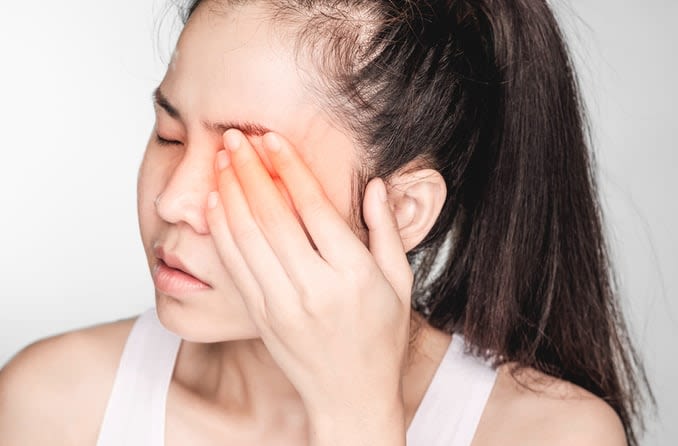Pink eye vs. stye: What’s the difference?

It can be difficult to tell the difference between pink eye (conjunctivitis) and a stye, especially early on. The two conditions have several symptoms and signs in common, including itching, redness and discomfort. However, only a stye is characterized by a painful red bump on the eyelid.
Here’s how to identify whether you’re experiencing pink eye or a stye, what symptoms to expect and how to treat each condition:
Causes
One of the biggest differences between pink eye and a stye is what causes each condition. Although they are both common eye infections, they have varying causes. Pink eye can be caused by bacteria, viruses or allergens, while all styes are caused by bacteria.
Pink eye causes
The three main types of pink eye are viral, allergic and bacterial. Each type can result from something different, but some of the most common pink eye causes include:
Allergens (dust, pollen, pet dander, smoke or chemicals)
A virus such as a cold or the flu
Foreign objects entering the eye
Irritation from cosmetics, cleansers or contact lenses
Exposure to bacteria
Stye causes
A stye (also called a hordeolum) occurs when bacteria causes inflammation or infection at the base of an eyelash follicle (an external hordeolum) or within one of the eyelid’s small oil glands (an internal hordeolum). That bacteria can be introduced to your eyes if you:
Touch or rub your eyes frequently
Go to sleep with eye makeup on
Wear contact lenses longer than their intended use
Maintain overall poor eye hygiene
Symptoms
Some signs and symptoms of pink eye and styes are similar, but only a stye can be identified by a pimple-like bump on the eyelash line or eyelid.
Pink eye symptoms
Pink eye symptoms can include:
Redness, both in and around the eye
Irritation and/or inflammation
Watering eyes
Sticky eye discharge
Stye symptoms
Styes will have symptoms such as:
A small, pimple-like bump on the eyelash line or eyelid
Inflammation of the eyelid
Redness
Tenderness
Crusty discharge
Treatment
Viral pink eye, bacterial pink eye and styes typically go away on their own within a week or two, but if symptoms worsen or affect vision, or if there is a change in the eyes’ appearance, a visit to an eye care provider for assessment and treatment may be necessary.
Pink eye treatment
When it comes to pink eye treatment, the following remedies may help with the condition:
Avoid wearing eye makeup and contact lenses
Apply cold or warm compresses
Use over-the-counter pain relievers, ointments or artificial tears
Use a personal towel and linens to avoid spreading the infection
Avoid allergens and take allergy medications as needed
If you have chronic conjunctivitis — pink eye that just won’t go away — or worsening symptoms, make an appointment with an eye care provider for proper diagnosis and treatment.
Stye treatment
Here’s what you can do to help get rid of a stye:
Avoid wearing eye makeup and contact lenses
Apply warm compresses, such as a warm washcloth or warm tea bag
Use over-the-counter eye ointment and pain reliever
If a stye gets to a point where it impairs your vision, contact your eye care provider. In some cases, a stye may require prescription medication, a steroid shot or even surgical stye removal.
Are pink eye and styes contagious?
Viral pink eye and bacterial pink eye are contagious. Styes are not contagious. To avoid spreading the virus or bacteria that cause the infection, use individual towels and linens, keep your eyes clean and wash your hands thoroughly and regularly.
Unless a secondary infection develops, allergic conjunctivitis is not contagious.
Prevention
When it comes to preventing pink eye and styes, hygiene is key — this goes for hands, eyes and products that come in contact with your eyes. To help prevent both conditions, you should:
Wash your hands thoroughly and regularly
Avoid touching or rubbing your eyes
Clean or replace makeup products and makeup tools often
Remove makeup completely before sleep
Avoid sharing eye makeup tools or products that come in direct contact with eyes
Keep contact lenses clean and do not wear lenses past their expiration or intended use
If you experience vision changes or pain in or around your eyes but aren’t sure what’s causing it, schedule an appointment with your eye care provider.
READ RELATED: Chalazion: Causes & Treatment
Page published on Tuesday, 17 May 2022
Medically reviewed on Friday, 3 September 2021






